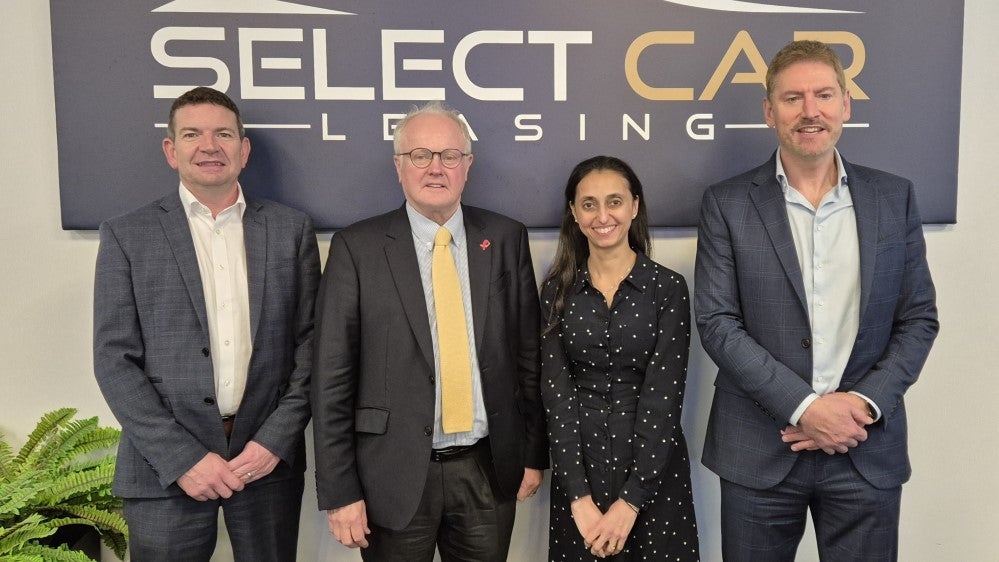A pricing benchmark has been
set for retail motor finance with dealers across the UK reporting
providers’ rates have risen by about 0.5% APR.
 Retailers report that
Retailers report that
Carlyle Finance was the first to raise prices but the move became
more widespread when market leader Black Horse Motor Finance
increased rates by an average of 0.25 flat (0.45% APR) on 9
May.
The base rate remains at 0.5% and a
range of lenders have reported that their cost of funding has
remained stable since spiking earlier in the year in anticipation
of bank rate rises.
So what is the reason behind the
move by Black Horse and Carlyle?
Peter Cottle, of motor finance
consultancy FinanceTorque, said: “A number of motor finance
companies are announcing rate increases at the moment, which on the
face of it may look strange when comparing to Libor and other
financial monitors.
How well do you really know your competitors?
Access the most comprehensive Company Profiles on the market, powered by GlobalData. Save hours of research. Gain competitive edge.

Thank you!
Your download email will arrive shortly
Not ready to buy yet? Download a free sample
We are confident about the unique quality of our Company Profiles. However, we want you to make the most beneficial decision for your business, so we offer a free sample that you can download by submitting the below form
By GlobalData“However, in true terms their cost
of funds are increasing in line with longer range forecasts, and
availability of capital can come at a cost well above published
market rates.
“Just like any other business, they
have to be able to demonstrate an acceptable return on investment
for their shareholders, and that is understandable.”
Internal costs
Martin Boon, a group F&I
manager in the dealer sector and former employee of GE Money, said
bank-owned finance companies are having to increase rates because
of their internal cost of funding.
“They are paying an internal
premium on top of swap rate, and in the end they are expected to
make a return,” Boon said.
“To a group manager with a good
relationship with their lenders, this makes sense – they understand
the cost of three to four year money.
“But to a business manager in a
small group or a single site, a sudden rate change might not make
so much sense.
“Dealers earn their money from the
margin between the finance company’s rate and the rate they pass to
the customer.
“Even a small change like this will
eat into that margin, unless the rate is passed on to the consumer,
which has implications on competition.”
The question many dealers are
asking now is whether other independent lenders will follow Black
Horse’s lead.
Certainly, dealers report that
Black Horse’s chief competitor, Santander Consumer Finance, has not
yet raised rates across the board.
This may be because Santander, the
subsidiary of a parent group sitting on a vast global deposit base,
has access to cheaper money internally than Black Horse and can
afford to offer dealers a cheaper rate while still preserving
margins.
Does Santander hope to win dealers
from Black Horse by doing so? Probably not for the sake of 25 basis
points.
With far fewer funders in the
industry than there were a few years ago, it no longer makes sense
for dealers to switch providers overnight based on small changes to
the rate.
Car finance has become increasingly
decommoditised and the service provided by lenders has become a
much more important factor in retaining and winning customers than
the undercutting of competitors’ rates.
As one finance company sales leader
said: “If a dealer came to me because Black Horse’s money had
become a quarter of a% more expensive than mine, I’d doubt how firm
a relationship we could form with them anyway.”
Competitive
advantage
The reason Santander has not opted
for a blanket rate increase may indeed be a competitive measure but
not one aimed at its fellow finance providers.
Many motor finance houses are
expecting a return of direct lenders to the car market in coming
months, and if this happens they will want to maintain as much of a
competitive advantage as they can.
Paul Harrison, head of motor
finance at the Finance and Leasing Association, urged the need for
lenders to weigh up preservation of margins against the maintenance
of competitive pricing in an increasingly active marketplace.
“Dealer finance is an affordable
and popular way to pay for a car, as highlighted in our latest
statistics which show that 54.2% of private buyers opted for
forecourt finance,” Harrison said
“While sensible margins for lenders
are important to sustainable business, motor financiers are
anticipating the re-emergence of direct lenders.
“Greater competition will change
market dynamics but it will be important to promote the benefits
secured motor lending holds over loans.
“The price of finance is influenced
by many factors, including wholesale funding, although I understand
the cost of borrowing for lenders has stabilised in recent
months.”
Regardless of which lenders hold
their ground against price increases this month, it may not be long
before a concrete change to base rate makes the point moot.
A rate rise is on its way at some
point in the months to come and will incite another round of
pricing reviews.
A senior manager at one lender said: “I wouldn’t anticipate
money costs rising until our core money is more expensive. The acid
test for the industry as a whole will come when we see significant
changes to the money markets.”







